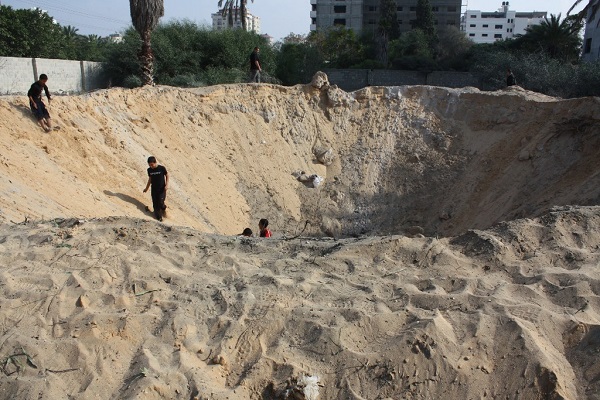Economy
Red tape and uncertainty hurting oil and gas investment in Canada

From the Fraser Institute
By Julio Mejía and Elmira Aliakbari
Investment in the sector fell from $76 billion in 2014 to $35 billion in 2023
Global oil demand is set to reach record highs this year, with growth in natural gas demand on the horizon—and Canada’s oil and gas sector could be a major source of clean and reliable energy, if policymakers help make the country a more desirable place to invest.
While investment in Canada’s oil and gas industry has increased steadily since 2020, it remains far below record levels achieved in 2014. In fact, investment in the sector fell from $76 billion in 2014 to $35 billion in 2023. Less investment means less money to develop new energy projects, infrastructure and technologies, and consequently fewer jobs and less economic opportunity for Canadians. While many factors are at play, investors point to Canada’s policy barriers as major deterrents to investment.
According to a recent study published by the Fraser Institute, which surveys oil and gas investors on the investment attractiveness of 17 energy-producing jurisdictions in Canada and the United States, Wyoming remains the top jurisdiction in terms of investment attractiveness followed by North Dakota and Saskatchewan, the only Canadian jurisdiction ranking in the top five.
Alberta, Canada’s largest oil and natural gas producer, ranked 9th while Newfoundland and Labrador and British Columbia are among the least attractive jurisdictions, ranking 14th and 15th respectively. Put simply, with the exception of Saskatchewan, Canadian provinces are less attractive for oil and gas investment compared to U.S. states.
So, what policy factors hinder Canada’s oil and gas sector?
In short, uncertainty about environmental regulations, disputed land claims, regulatory duplication and inconsistencies, the cost of regulatory compliance and barriers to regulatory enforcement.
More specifically, according to the survey, 100 per cent of respondents for Newfoundland and Labrador, 93 per cent for British Columbia and 50 per cent for Alberta indicated that uncertainty concerning environmental regulations was a deterrent for investment compared to only 6 per cent for Oklahoma and 11 per cent for Texas. Overall, on average, 68 per cent of respondents were deterred by the uncertainty concerning environmental regulations in Canada compared to 41 per cent in the U.S.
This negative perception of Canada’s regulatory environment should come as no surprise. In 2019, the Trudeau government enacted Bill C-69, which introduced subjective criteria including the “social impact” of energy investment and its “gender implications,” into the evaluation process of major energy projects, causing massive uncertainty about the development of new infrastructure projects. While the Supreme Court declared this bill unconstitutional, the energy sector still grapples with uncertainty as it awaits new legislation.
Similarly, the Trudeau government passed Bill C-48, which bans large oil tankers carrying crude oil or persistent oils (including upgraded bitumen and fuel oils) off B.C.’s northern coast and limits access to Asian markets. The Trudeau government also created an arbitrary cap on greenhouse gas (GHG) emissions from the oil and gas industry (while all other GHG emissions were exempt) and introduced new rules on methane emissions. Energy industry leaders have also expressed concern over Ottawa’s clean-fuel standards, which mandate that firms selling gas, liquid and solid fuels reduce the amount of GHG generated per unit of fuel they sell.
Clearly, Ottawa’s aggressive regulations are hurting Canada’s oil and gas industry. In light of the vital role the energy sector plays in the economy, including job creation and government revenues, the federal government should eliminate barriers and implement reform to enhance the sector’s appeal to investors. Otherwise, Canada will keep losing opportunities to the more attractive investment climate south of the border.
Authors:
Business
Economic progress stalling for Canada and other G7 countries

From the Fraser Institute
By Jake Fuss
For decades, Canada and other countries in the G7 have been known as the economic powerhouses of the world. They generally have had the biggest economies and the most prosperous countries. But in recent years, poor government policy across the G7 has contributed to slowing economic growth and near-stagnant living standards.
Simply put, the Group of Seven countries—Canada, France, Germany, Italy, Japan, the United Kingdom and the United States—have become complacent. Rather than build off past economic success by employing small governments that are limited and efficient, these countries have largely pursued policies that increase or maintain high taxes on families and businesses, increase regulation and grow government spending.
Canada is a prime example. As multiple levels of government have turned on the spending taps to expand programs or implement new ones, the size of total government has surged ever higher. Unsurprisingly, Canada’s general government spending as a share of GDP has risen from 39.3 per cent in 2007 to 42.2 per cent in 2022.
At the same time, federal and provincial governments have increased taxes on professionals, businessowners and entrepreneurs to the point where the country’s top combined marginal tax rate is now the fifth-highest among OECD countries. New regulations such as Bill C-69, which instituted a complex and burdensome assessment process for major infrastructure projects and Bill C-48, which prohibits producers from shipping oil or natural gas from British Columbia’s northern coast, have also made it difficult to conduct business.
The results of poor government policy in Canada and other G7 countries have not been pretty.
Productivity, which is typically defined as economic output per hour of work, is a crucial determinant of overall economic growth and living standards in a country. Over the most recent 10-year period of available data (2013 to 2022), productivity growth has been meagre at best. Annual productivity growth equaled 0.9 per cent for the G7 on average over this period, which means the average rate of growth during the two previous decades (1.6 per cent) has essentially been chopped in half. For some countries such as Canada, productivity has grown even slower than the paltry G7 average.
Since productivity has grown at a snail’s pace, citizens are now experiencing stalled improvement in living standards. Gross domestic product (GDP) per person, a common indicator of living standards, grew annually (inflation-adjusted) by an anemic 0.7 per cent in Canada from 2013 to 2022 and only slightly better across the G7 at 1.3 per cent. This should raise alarm bells for policymakers.
A skeptic might suggest this is merely a global phenomenon. But other countries have fared much better. Two European countries, Ireland and Estonia, have seen a far more significant improvement than G7 countries in both productivity and per-person GDP.
From 2013 to 2022, Estonia’s annual productivity has grown more than twice as fast (1.9 per cent) as the G7 countries (0.9 per cent). Productivity in Ireland has grown at a rapid annual pace of 5.9 per cent, more than six times faster than the G7.
A similar story occurs when examining improvements in living standards. Estonians enjoyed average per-person GDP growth of 2.8 per cent from 2013 to 2022—more than double the G7. Meanwhile, Ireland’s per-person GDP has surged by 7.9 per cent annually over the 10-year period. To put this in perspective, living standards for the Irish grew 10 times faster than for Canadians.
But this should come as no surprise. Governments in Ireland and Estonia are smaller than the G7 average and impose lower taxes on individuals and businesses. In 2019, general government spending as a percentage of GDP averaged 44.0 per cent for G7 countries. Spending for governments in both Estonia and Ireland were well below this benchmark.
Moreover, the business tax rate averaged 27.2 per cent for G7 countries in 2023 compared to lower rates in Ireland (12.5 per cent) and Estonia (20.0 per cent). For personal income taxes, Estonia’s top marginal tax rate (20.0 per cent) is significantly below the G7 average of 49.7 per cent. Ireland’s top marginal tax rate is below the G7 average as well.
Economic progress has largely stalled for Canada and other G7 countries. The status quo of government policy is simply untenable.
Author:
Economy
‘Gambling With The Grid’: New Data Highlights Achilles’ Heel Of One Of Biden’s Favorite Green Power Sources

 From the Daily Caller News Foundation
From the Daily Caller News Foundation
By NICK POPE
New government data shows that wind power generation fell in 2023 despite the addition of new capacity, a fact that energy sector experts told the Daily Caller News Foundation demonstrates its inherent flaw.
Wind generation fell by about 2.1% in 2023 relative to 2022 generation, despite the 6 gigawatts (GW) of wind power capacity that came online last year, according to data published Tuesday by the U.S. Energy Information Administration (EIA). That wind power output dropped despite new capacity coming online and the availability of government subsidies highlights its intermittency and the problems wind power could pose for grid reliability, energy sector experts told the DCNF.
The decrease in wind generation is the first drop on record with the EIA since the 1990s; the drop was not evenly distributed across all regions of the U.S., and slower wind speeds last year also contributed to the decline, according to EIA. The Biden administration wants to have the American power sector reach carbon neutrality by 2035, a goal that will require a significant shift away from natural gas- and coal-fired power toward wind, solar and other green sources.

A table depicting the decrease of wind power generation in 2023 relative to 2022. (Screenshot via U.S. Energy Information Administration)
“Relying on wind power to meet your peak electricity demands is gambling with the grid,” Isaac Orr, a policy fellow at the Center of the American Experiment who specializes in power grid-related analysis, told the DCNF. “Will the wind blow, or won’t it? This should be a moment where policymakers step back and consider the wisdom of heavily subsidizing intermittent generators and punishing reliable coal and gas plants with onerous regulations.”
Between 2016 and 2022, the wind industry received an estimated $18.6 billion worth of subsidies, about 10% of the total amount of subsidies extended to the energy sector by the U.S. government, according to an August 2023 EIA report. Wind power received more assistance from the government than nuclear power, coal or natural gas over the same period of time.
“This isn’t subsidies per kilowatt hour of generation. It’s raw subsidies. If it were per kilowatt hour of generation, the numbers would be even more extreme,” Paige Lambermont, a research fellow at the Competitive Enterprise Institute, told the DCNF. “This is a massive amount of money. It’s enough to dramatically alter energy investment decisions for the worse. We’re much more heavily subsidizing the sources that don’t provide a significant portion of our electricity than those that do.”
“Policy that just focuses on installed capacity, rather than the reliability of that capacity, fails to understand the real needs of the electrical grid,” Lambermont added. “This recent disparity illustra
Wind power’s performance was especially lackluster in the upper midwest, but Texas saw more wind generation in 2023 than it did in 2022, according to EIA. Wind generation in the first half of 2023 was about 14% lower than it was through the first six months of 2022, but generation was higher toward the end of 2023 than it was during the same period in 2022.
In 2023, about 60% of all electricity generated in the U.S. came from fossil fuels, while 10% came from wind power, according to EIA data. Beyond generous subsidies for preferred green energy sources, the Biden administration has also aggressively regulated fossil fuels and American power plants to advance its broad climate agenda.
Biden’s Climate Bill Boosted An Offshore Wind Giant, But His Economy Brought It To The Brink https://t.co/AF7SPT2FNu
— Daily Caller (@DailyCaller) November 3, 2023
The Environmental Protection Agency’s (EPA) landmark power plant rules finalized this month will threaten grid reliability if enacted, partially because the regulations are likely to incentivize operators to close plants rather than adopt the costly measures required for compliance, grid experts previously told the DCNF. At the same time that the Biden administration is effectively trying to shift power generation away from fossil fuels, it is also pursuing goals — such as substantially boosting electric vehicle adoption over the next decade and incentivizing construction of energy-intensive computer chip factories — that are driving up projected electricity demand in the future.
“The EIA data proves what we’ve always known about wind power: It is intermittent, unpredictable and unreliable,” David Blackmon, a 40-year veteran of the oil and gas industry who now writes and consults on the energy sector, told the DCNF. “Any power generation source whose output is wholly dependent on equally unpredictable weather conditions should never be presented by power companies and grid managers as safe replacements for abundant, cheap, dispatchable generation fueled with natural gas, coal or nuclear. This is a simple reality that people in charge of our power grids too often forget. Saying that no doubt hurts some people’s feelings, but nature really does not care about our feelings.”
Blackmon also pointed out that, aside from its intermittency, sluggish build-out of the transmission lines and related infrastructure poses a major problem for wind power.
“Wind power is worthless without accompanying transmission, yet the Biden administration continues to pour billions into unreliable wind while ignoring the growing crisis in the transmission sector,” Blackmon told the DCNF.
Another long-term issue that wind power, as well as solar power, faces is the need for a massive expansion in the amount of battery storage available to store and dispatch energy from intermittent sources as market conditions dictate. By some estimates, the U.S. will need about 85 times as much battery storage by 2050 relative to November 2023 in order to fully decarbonize the power grid, according to Alsym Energy, a battery company.
The White House and the Department of Energy did not respond to requests for comment.
-

 MAiD2 days ago
MAiD2 days agoEven Canadian leftists are starting to recognize the ‘dystopian’ nature of MAiD
-
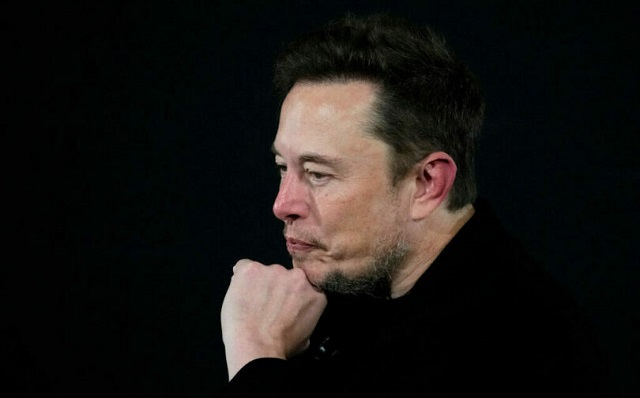
 Censorship Industrial Complex2 days ago
Censorship Industrial Complex2 days agoElon Musk skewers Trudeau gov’t Online Harms bill as ‘insane’ for targeting speech retroactively
-
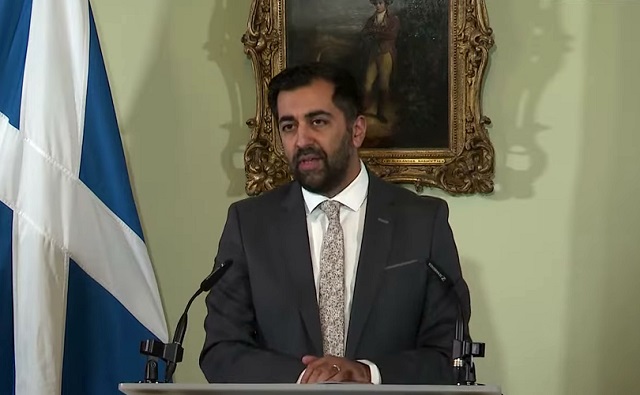
 Opinion23 hours ago
Opinion23 hours agoDoes Scottish gov’t turmoil signal the end of the ‘green’ agenda’s stranglehold on Europe?
-
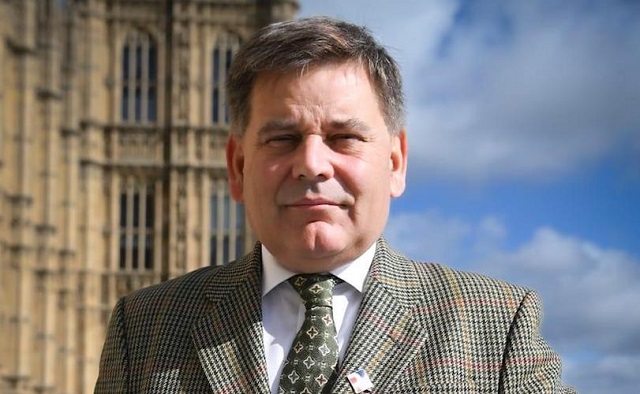
 COVID-192 days ago
COVID-192 days agoBritish MP Andrew Bridgen gives powerful speech on ‘scandal’ of excess deaths after COVID jab rollout
-

 Energy23 hours ago
Energy23 hours agoFresh Off Their Major Victory On Gas Export Terminals, Enviros Set Sights On New Target: Oil Exports
-

 Business23 hours ago
Business23 hours agoProposed changes to Canada’s Competition Act could kneecap our already faltering economy
-
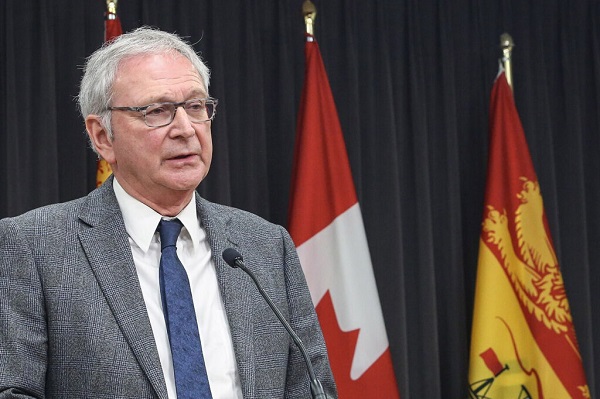
 Alberta2 days ago
Alberta2 days agoParent and gender dysphoria groups granted intervenor status in New Brunswick school policy case
-

 Business1 day ago
Business1 day agoEXCLUSIVE: US Is Failing To Counter Threat Of Chinese Land Ownership, Report Finds









